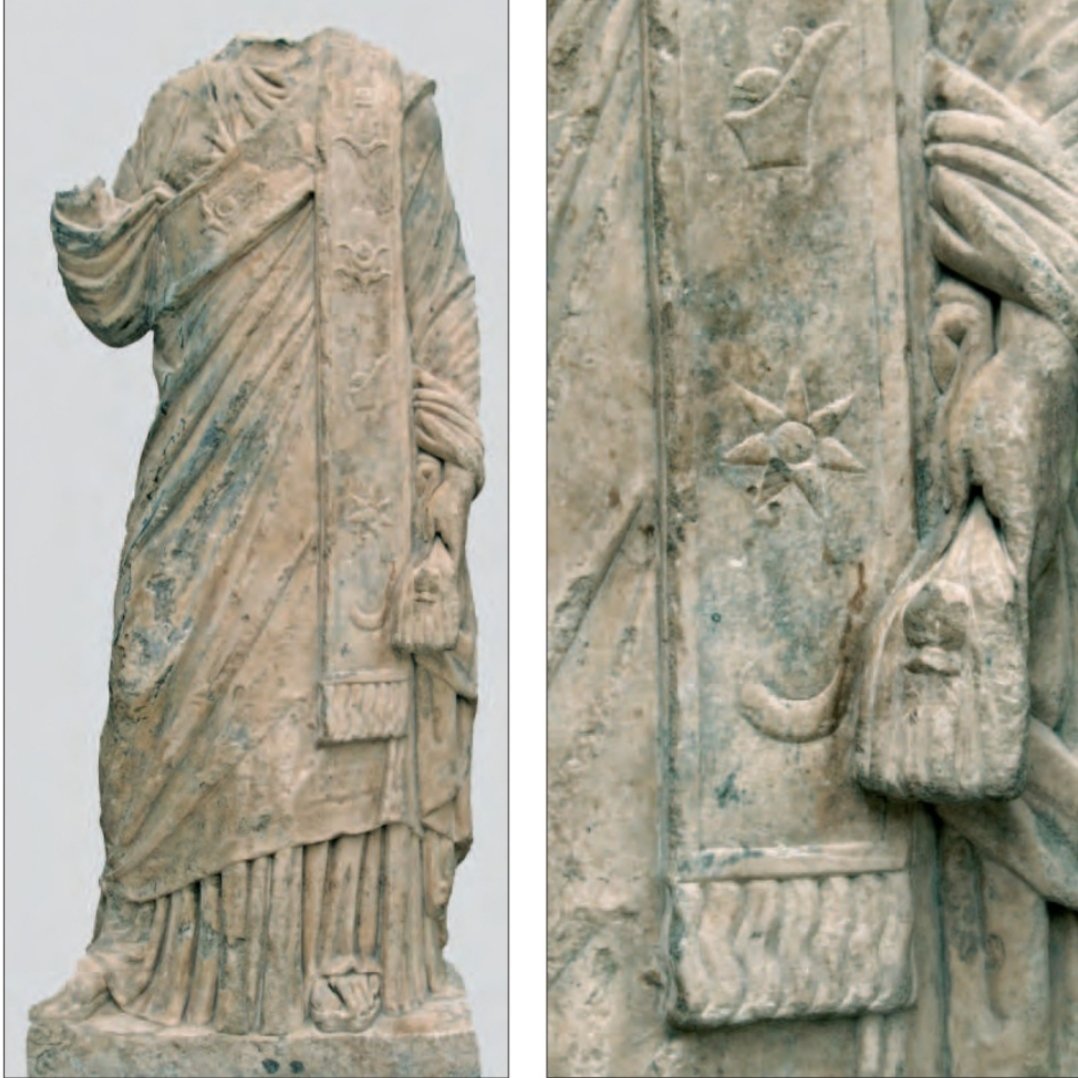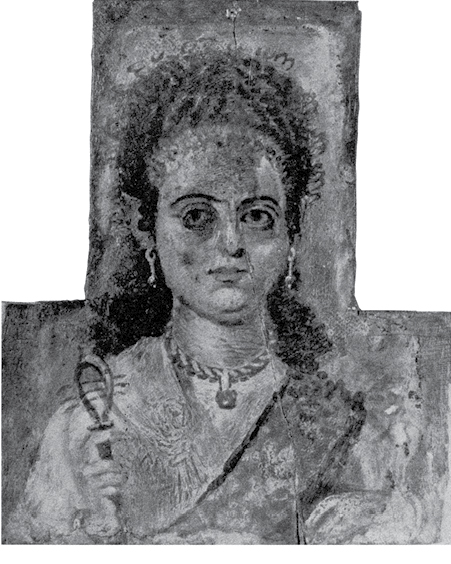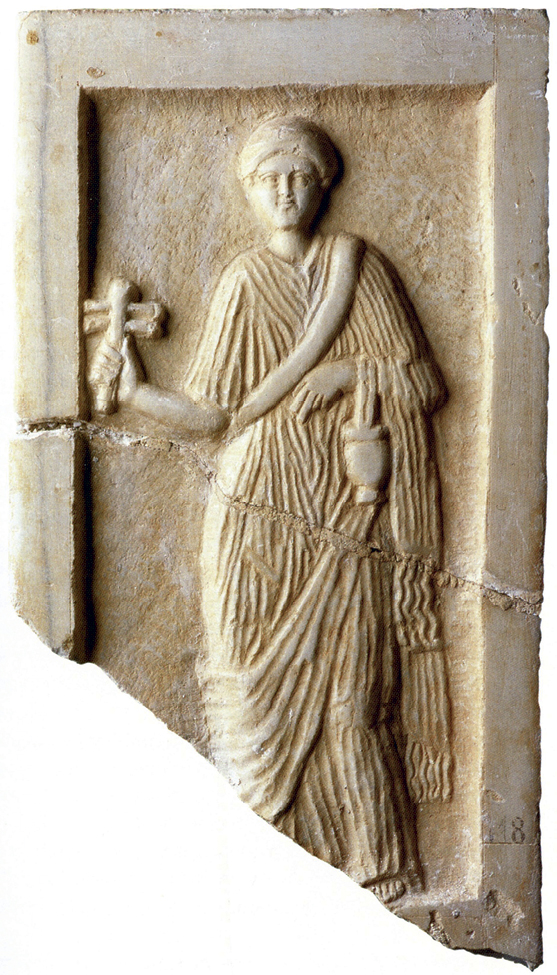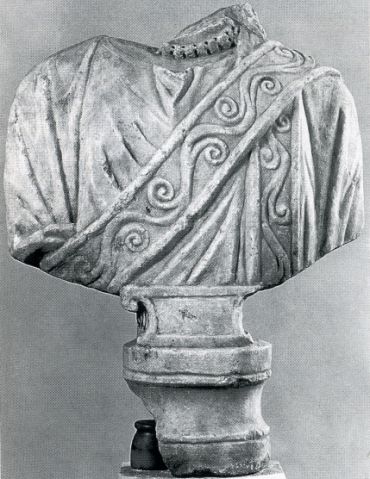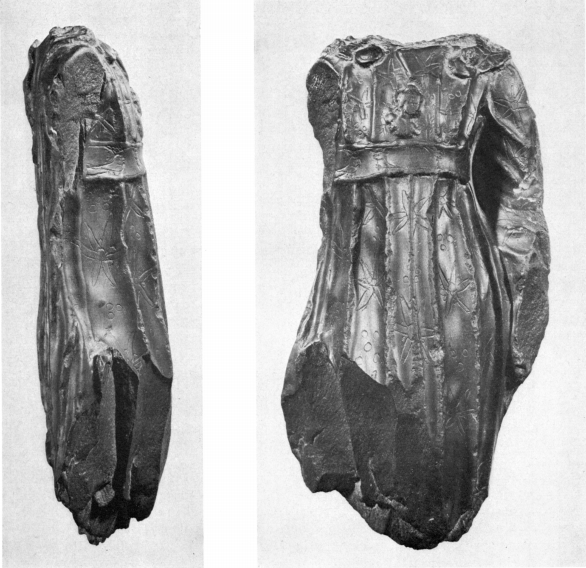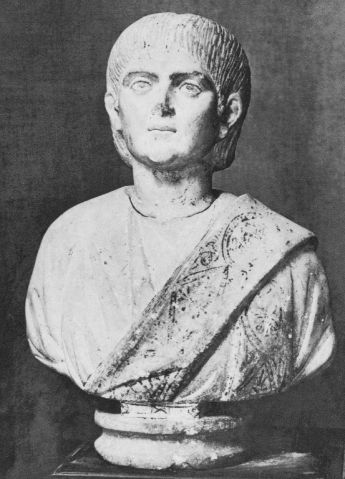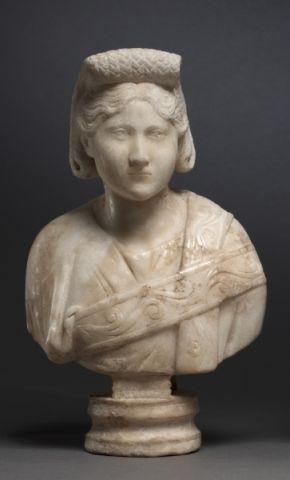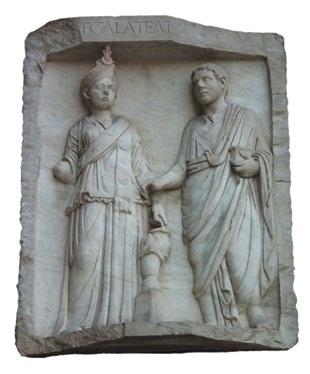
Zur Darstellung von religiöser Tracht in Griechenland und Rom
Hans Rupprecht Goette https://www.academia.edu/34691975/Zur_Darstellung_von_religi%C3%B6ser_Tracht_in_Griechenland_und_Rom
ornate band (sash)
Müskens, Sander, Egypt beyond representation : materials and materiality of Aegyptiaca Romana Issue Date
https://scholarlypublications.universiteitleiden.nl/handle/1887/46693
“Funerary relief of Galatea, who is represented in the guise of an Isis priestess as attested by the fringed veil and narrow stole with stars and crescent motifs, the situla in her left hand, and the crescent moon with lotus that she wears on the head (see Walters on this emblem in general). A bearded man on the right burns incense on a thymaterion in honour of the deceased; some authors believe that this man is an Isis priest (Malaise, Bricault, and Versluys). For the fragmentarily preserved Latin inscription see Malaise.
The relief has generally been dated to the mid-2nd century AD (early Antonine period) or slightly earlier (130-140 AD, on the basis of the hairstyle). It was allegedly found in the vicinity of the Villa Mattei, close to the Santa Maria in Domnica. On the basis of its findspot, the relief has been attributed to the so-called Iseum Metellinum, at least in studies on Aegyptiaca in the Roman world. However, this is presumably a private funerary relief, which, therefore, is not likely to have functioned in a sacral context.”
Rome, Musei Vaticani, Museo Pio Clementino, Loggia
Scoperta, inv. 840

